Rank Species | Scientific name Equisetum arvense Higher classification Puzzlegrass | |
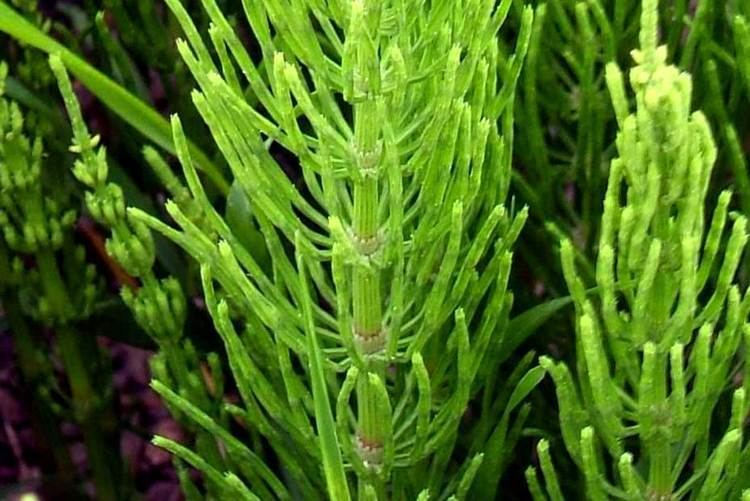 | ||
Similar Yarrow, Common Dandelion, Common Nettle, Perforate St John's‑wort, Meadowsweet | ||
Field horsetail common horsetail equisetum arvense 2014 04 22
Equisetum arvense, the field horsetail or common horsetail is a herbaceous perennial plant, native throughout the arctic and temperate regions of the northern hemisphere. It has separate sterile non-reproductive and fertile spore-bearing stems, growing from a perennial underground rhizomatous stem system. The fertile stems are produced in early spring and are non-photosynthetic, while the green sterile stems start to grow after the fertile stems have wilted, and persist through the summer until the first autumn frosts. It is commonly confused with mare's tail, Hippuris vulgaris.
Contents
- Field horsetail common horsetail equisetum arvense 2014 04 22
- Equisetum arvense with translation text
- Description
- Uses
- Invasive species
- References
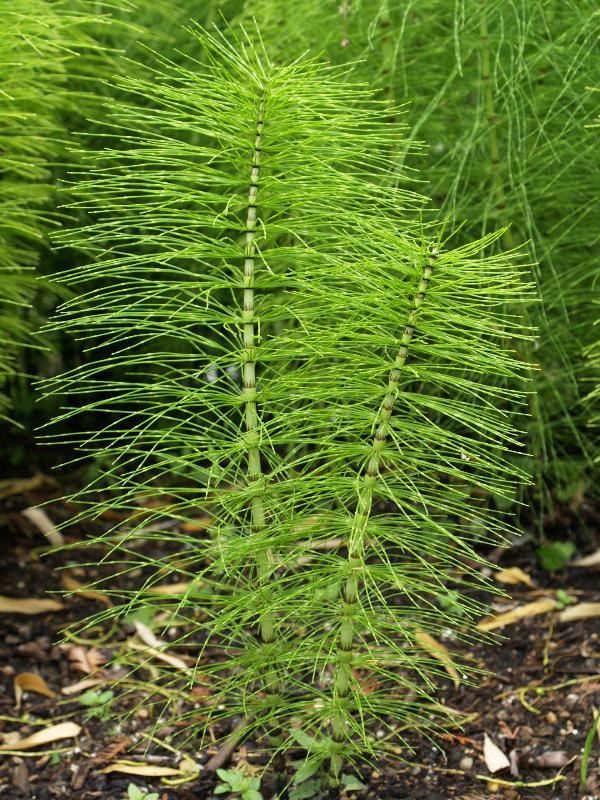
Equisetum arvense with translation text
Description

The sterile stems are 10–90 cm tall and 3–5 mm diameter, with jointed segments around 2–5 cm long with whorls of side shoots at the segment joints; the side shoots have a diameter of about 1 mm. Some stems can have as many as 20 segments. The fertile stems are succulent-textured, off-white, 10–25 cm tall and 3–5 mm diameter, with 4–8 whorls of brown scale leaves, and an apical brown spore cone 10–40 mm long and 4–9 mm broad.
It has a very high diploid number of 216 (108 pairs of chromosomes).
The specific name arvense is derived from the Latin arvensis, meaning "from the meadow, field or grassland."
Uses

The plant contains several substances which can be used medicinally. It is rich in the minerals silicon (10%), potassium, and calcium. The buds are eaten as a vegetable in Japan and Korea in spring time. All other Equisetum species are toxic.
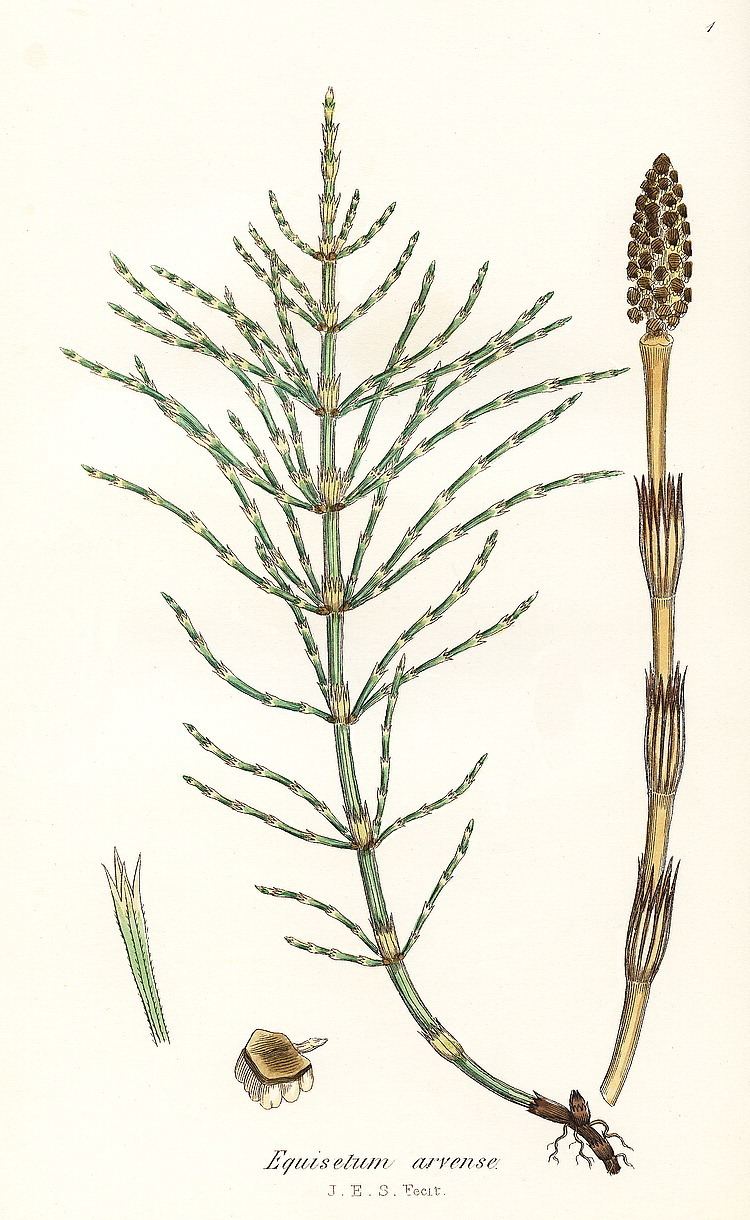
In polluted conditions, it may synthesize nicotine. Externally it was traditionally used for chilblains and wounds. It was also once used to polish pewter and wood (gaining the name pewterwort) and to strengthen fingernails. It is also an abrasive. It was used by hurdy-gurdy players to dress the wheels of their instruments by removing resin build up.
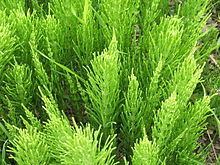
Equisetum is used in biodynamic farming (preparation BD 508) in particular to reduce the effects of excessive water around plants (such as fungal growth). The high silica content of the plant reduces the impact of moisture.
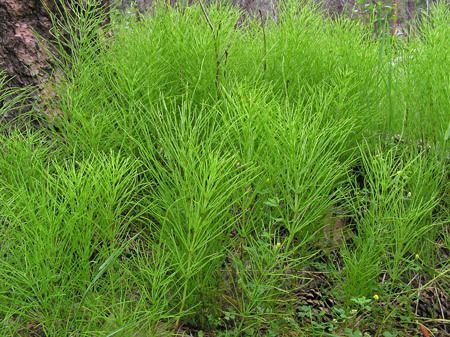
E. arvense herb has been used in traditional Austrian medicine internally as tea, or externally as baths or compresses, for treatment of disorders of the skin, locomotor system, kidneys and urinary tract, rheumatism and gout.
Invasive species
Equisetum arvense was introduced into New Zealand in the 1920s and was first identified as an invasive species there by Ella Orr Campbell in 1949. It is listed on the National Pest Plant Accord preventing its sale, spread and cultivation.
